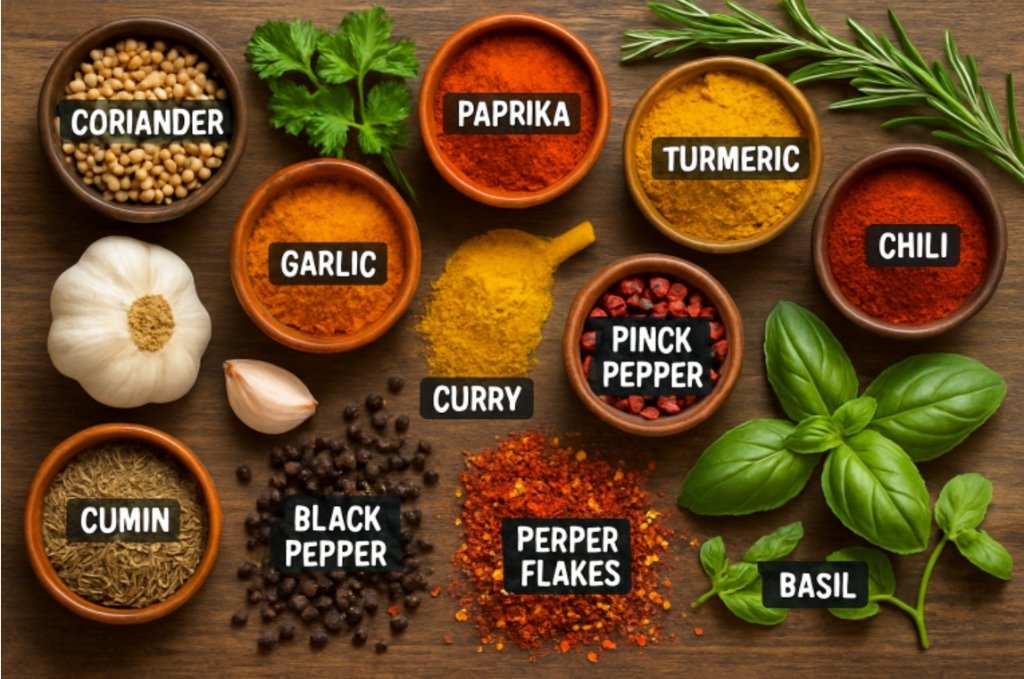Across kitchens around the globe, the art and science of combining spices is redefining expectations and possibilities in culinary endeavors of every scale. This nuanced creative process both honors culinary traditions, serving as a bridge to the rich past, and fosters innovative experimentation essential to today’s most compelling dishes. In recent years, chefs, startups, and food manufacturers have been seeking greater efficiency without sacrificing creativity and flavor. Industrial mixer for chemicals technology, now adapted for food-grade use, has played a surprising role in achieving this precision, ensuring uniform blending of spices while maintaining their delicate aromatic profiles. These tools ensure batch-to-batch flavor consistency, vital for both quality and food safety, while supporting the wild imagination of the modern chef. With precision mixing, the balance of aromatics, heat, and herbal notes is maintained, enabling food producers to scale beloved blends and introduce them to broader audiences.
As adventurous eaters demand bold, inventive experiences that go beyond familiar boundaries, the art of food spice blending has truly come into the spotlight. It now drives menu trends at cutting-edge restaurants, energizes home cooking, and inspires food startups worldwide. From flavor-packed fusion dishes that remix iconic recipes from multiple cultures to health-focused blends designed to address dietary needs, spices are finding ever more dynamic uses. Driven by global travel, cultural curiosity, and wellness trends, the demand for new and intriguing flavors means that every meal is an opportunity to explore the vast, interconnected world of taste.
The Rise of Fusion Cuisines
Fusion cuisine champions the seamless integration of spices and techniques from one culture into another, resulting in remarkable hybrids that captivate and intrigue diners worldwide. The most inventive top-tier restaurants have built their reputations by connecting diverse culinary traditions through flavor—the kitchen becomes an international meeting place. For instance, chefs in Mexico City at celebrated venues like Masala y Maíz artfully weave Indian, African, and Mexican spices into dishes that not only honor each culture’s culinary roots but also expand the boundaries of what each cuisine can be. Each carefully composed plate becomes a testament to global interconnectedness, breaking down borders and stereotypes bite by bite. These creative dishes encourage diners to step outside their comfort zones and develop a richer, more nuanced appreciation for global heritage, all while expanding their own flavor horizons. Through these efforts, fusion cuisine does more than create new tastes; it forges connections among people, regions, and food histories, fostering dialogue and mutual respect.
Health-Conscious Spice Blends
The modern emphasis on wellness is radically transforming how spices are blended, marketed, and consumed. Nutrition-forward cooks and culinary professionals are reimagining tradition by enhancing recipes with so-called “superfoods”—ingredients like matcha, chia seeds, turmeric, and quinoa that are prized for their nutritional impact. According to insights from Healthline, many common herbs and spices, such as ginger, cinnamon, turmeric, and garlic, offer powerful health benefits, from boosting immunity to reducing inflammation. The integration of these powerhouse ingredients into familiar spice blends turns everyday dishes into sources of both pleasure and nourishment.
Consider, for example, the growing popularity of quinoa biryani, in which an ancient Indian preparation meets South American grains, or matcha-cardamom smoothies that blend the antioxidant punch of Japanese tea with warm, comforting spices of South Asia. These creations are finding their place in both trendy restaurants and home kitchens, showing that healthy eating need not compromise flavor or cultural depth. Forward-thinking chefs and wellness influencers are using spices not only to excite the palate but also as vehicles to deliver antioxidants, anti-inflammatory compounds, and natural energy boosters, illustrating the profound influence of health trends on the evolution of spice blending.
Innovative Culinary Techniques
In the quest for originality, experimentation has become the hallmark of contemporary spice blending. Adventurous chefs are pushing far beyond traditional boundaries—using time-honored spices in surprising contexts and forging entirely new methods of extraction and infusion. For example, za’atar, a centuries-old Middle Eastern blend, is increasingly featured in gourmet baked goods, lending its citrusy, herbal notes to everything from crackers to sourdough loaves. Similarly, baharat—a heady, aromatic mixture—has found success in decadent chocolate desserts, where its spicy warmth elevates sweetness and adds intrigue to classic treats. These boundary-bending applications are part of a larger movement to reinterpret basics: innovative techniques like cold infusion, spice smoking, and dehydrated blends have unlocked new ways to experience flavor. The freshness and surprise these combinations deliver reflect food’s growing role as both sustenance and entertainment, with every dish an opportunity to astonish and delight guests.
Consumer Demand for Bold Flavors
The popularity of spices is soaring as diners and home cooks alike embrace a newfound love for lively, robust tastes. Societal shifts toward global-mindedness—and the amplified voice of social media—have supercharged this trend. Restaurant menus, particularly in fast-casual and international chains, are introducing ever more daring flavors: in the first half of 2023, for example, major brands across the U.S. launched over 270 spicy, limited-time offerings to capitalize on demand for excitement and novelty at the table. Hot sauces, global spice mixes, and specialty seasoning blends are flying off grocery store shelves, with category growth outpacing many other food sectors. Consumers’ enthusiasm for bolder, brighter flavors has changed how products are developed, encouraging food brands to innovate quickly and cater to individual tastes. This growing appetite for flavor variety means that even staple foods—pasta, rice, bread—are getting regular upgrades, proving that interest in spice isn’t just a fad but a permanent shift in the way we eat.
Global Influence on Local Cuisines
In our increasingly globalized world, the impact of international spice traditions on local recipes is stronger than ever. With migration, travel, and technology breaking down barriers, culinary exchange has become more dynamic and immediate. For example, in Saudi Arabia, acclaimed chefs are combining local grains and spices with European cooking techniques, creating dishes that are both uniquely regional and unmistakably global. The presence of these creative hybrids in everything from street food to fine dining demonstrates that local foodways are not being erased, but rather enriched and amplified. These exchanges benefit both hosts and visitors, fostering new appreciation for shared ingredients and culinary ideas, and giving rise to trendsetting combinations. Even in the smallest kitchens, adventurous home cooks can now access a world of spice influences, proving that international flavor is within everyone’s reach—a phenomenon that celebrates the unity of global food culture and the endless potential of culinary fusion.
Spice Blends in Home Cooking
No longer just the province of restaurant professionals, spice blending’s popularity in home kitchens is soaring. Growing access to high-quality, pre-blended seasonings has empowered amateur cooks to play with a broader range of flavors than ever before. Whether you’re preparing a weeknight stir-fry or an elaborate holiday meal, the right mix can transport your taste buds across the world in moments. This ease of exploration is fueling a boom in the seasoning and spice blend sector, with retailers reporting continuous growth driven by adventurous home cooks. Online tutorials, food blogs, and social media influencers are further accelerating this trend by demystifying complex global blends and inspiring confidence through approachable recipes. As a result, more people are cooking from scratch, introducing family and friends to flavors from distant lands, and personalizing meals in ways that reflect their unique culinary perspectives. In this way, home spice blending helps democratize world cuisine, making everyday cooks active participants in the ongoing global conversation on food.
Conclusion
Spice blending stands at the very heart of today’s creative, collaborative global food scene, making it possible for anyone to taste the world or revisit the past with a single, extraordinary bite. Whether through inventive restaurant dishes, adventurous home-cooked meals, or the meteoric rise of vibrant, bold flavors, the thoughtful combination of spices remains the connecting thread linking innovation with history, culture, and pure enjoyment. As the evolution of this timeless craft continues, so too does our appreciation for the culinary arts—and for the countless cultural stories and generations of expertise that inspire our next unforgettable meal.

